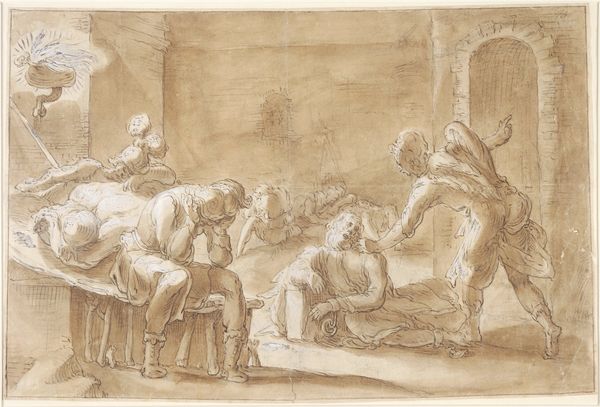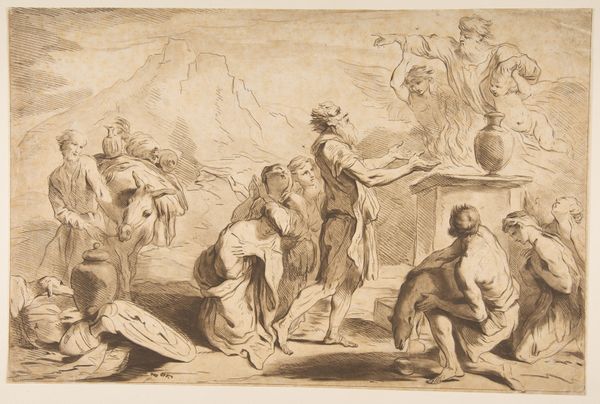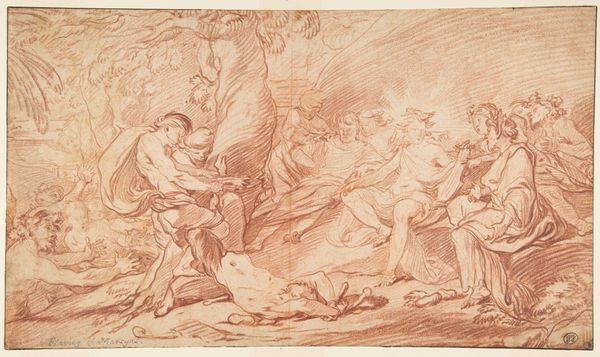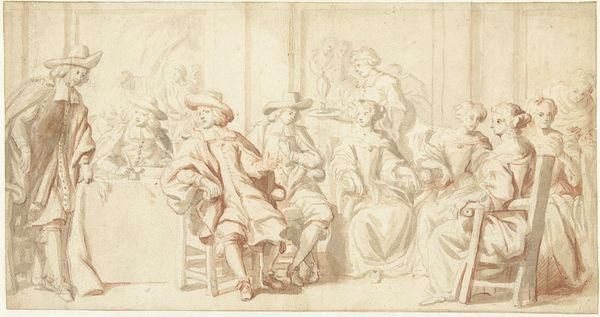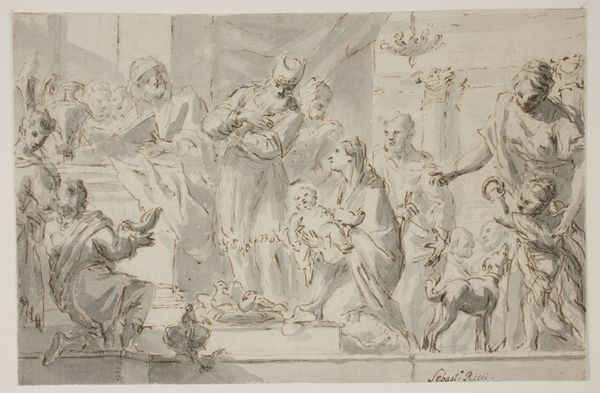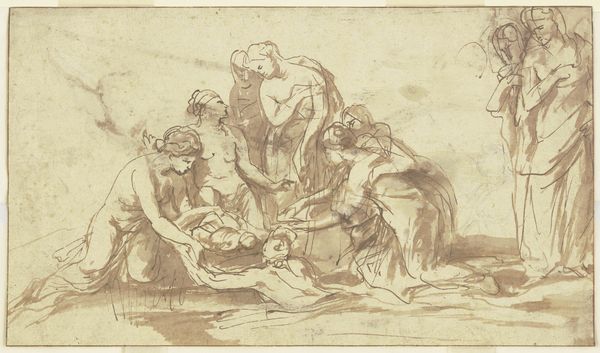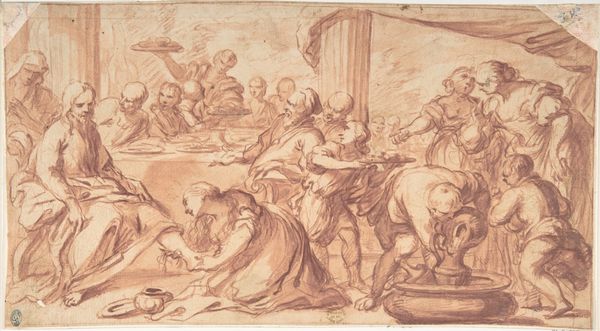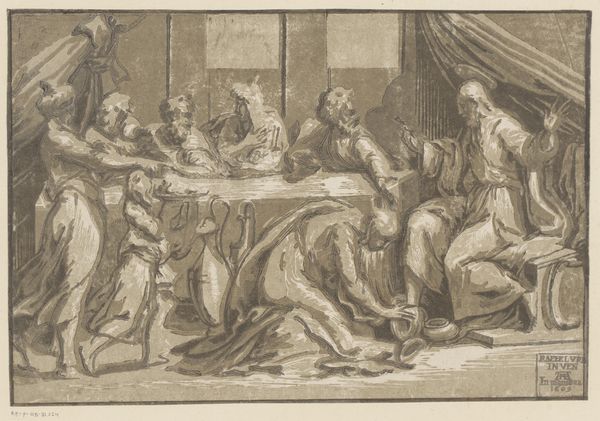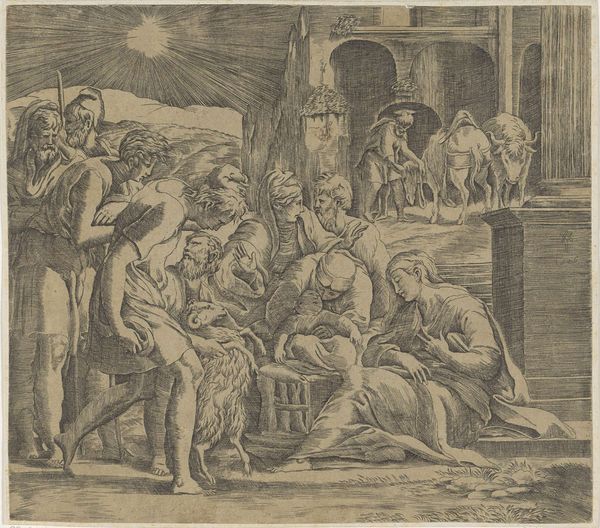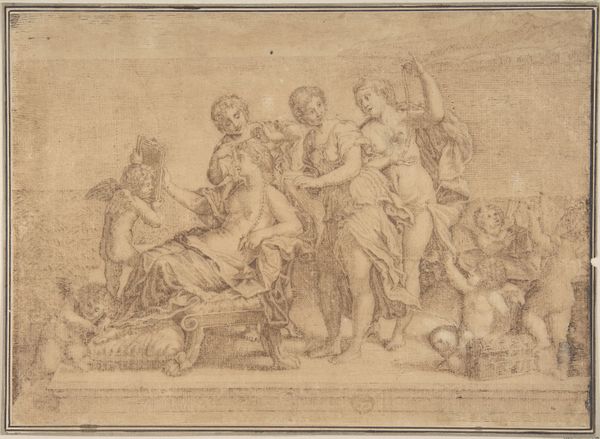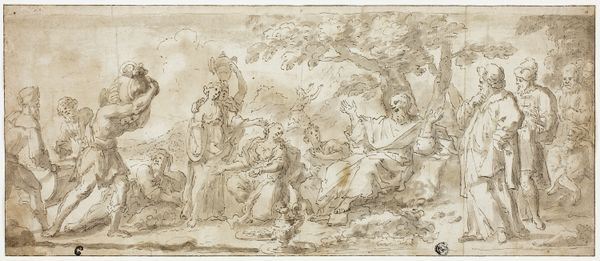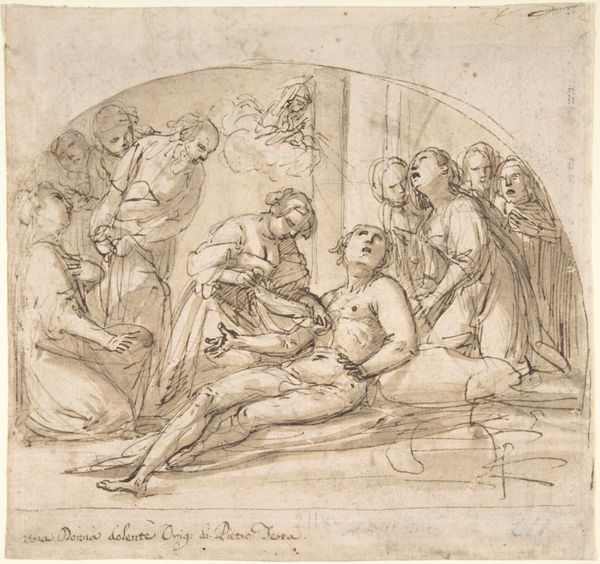
#
landscape illustration sketch
#
toned paper
#
light pencil work
#
pencil sketch
#
pencil drawing
#
ink drawing experimentation
#
coffee painting
#
pen-ink sketch
#
portrait drawing
#
pencil work
Dimensions: height 270 mm, width 389 mm
Copyright: Rijks Museum: Open Domain
Editor: Here we have Hendrik Soukens' "Bacchanaal" from 1695, a pen and ink drawing. There’s so much activity crammed into this sketch; it almost feels like a snapshot of pure, unadulterated revelry. What do you see in this piece? Curator: Immediately, I see a stark juxtaposition of the elite and the mythological. The "Bacchanaal" depicts not just drunken celebration, but a structured, hierarchical bacchanal. Look at the attire, the raised cups – symbols of power and access. Do you notice the bodies, though? The reclining figures, the ones vomiting—they are abject bodies on display for consumption. How does this interplay of social classes impact your interpretation? Editor: I hadn't considered that hierarchical dynamic. So, you’re saying it’s more than just a party scene. There's something…critical happening? Curator: Precisely! Consider the socio-political climate of the late 17th century. Displays of wealth and leisure were often veiled critiques of power. Soukens invites us to question the very nature of excess and its impact on societal structures. Why do you think Soukens uses such ephemeral materials for a scene steeped in such weighty themes? Editor: That's an interesting contrast. The delicate lines make it feel fleeting, almost as if the revelry itself is unsustainable. Perhaps it highlights the temporary nature of wealth and power? Curator: Exactly! The light pencil work acts as a visual metaphor for the fleeting nature of social status. How might this sketch challenge us to reconsider the visual culture of power in our own time? Editor: This has been truly eye-opening. Seeing it as a critique rather than just documentation is a significant shift. I’ll definitely look closer at those societal undercurrents from now on. Curator: And that's where the power of art history lies. It reveals that art is never just about what you see; it’s about understanding why you're seeing it.
Comments
No comments
Be the first to comment and join the conversation on the ultimate creative platform.
